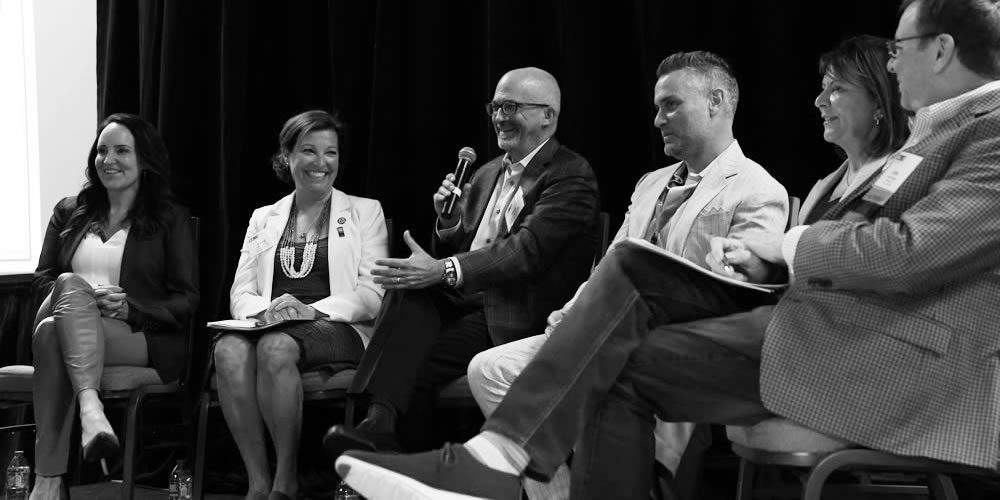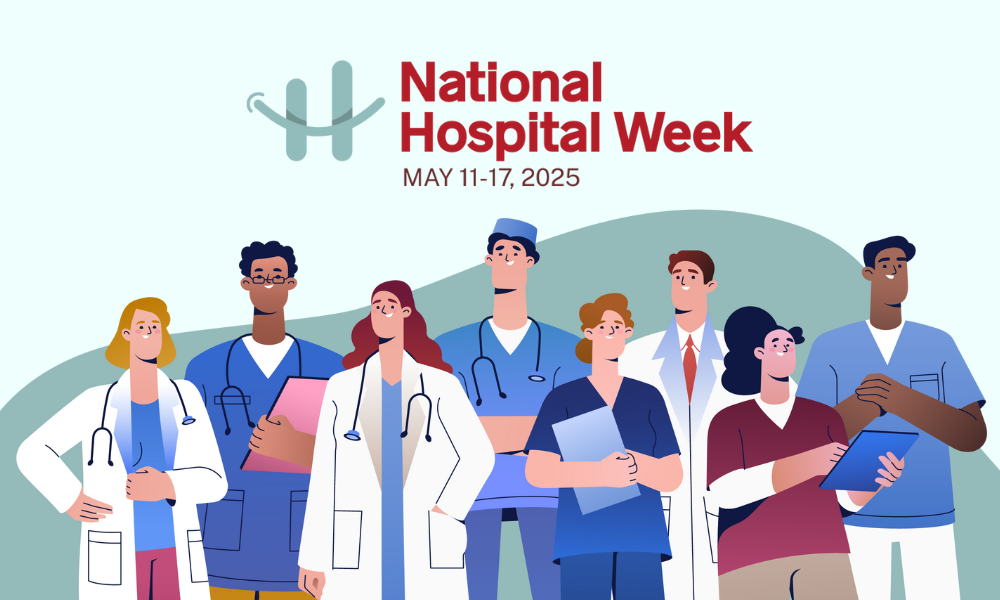PARK CITY, Utah — During the National Association of Locum Tenens Organizations (NALTO) annual Fall Fly-In on Sept. 26-27, five former NALTO presidents convened in a compelling panel discussion moderated by newly appointed president Jarin Dana, of Fusion Healthcare Staffing.
The five former leaders didn’t hold back their thoughts and opinions, recalling the growing pains that came along with forming the association — the only one of its kind for locum tenens – in 2011. They also dished on the nuances of industry and offered predictions for the industry as it continues growing like gangbusters.
Locumpedia briefly covered the condensed version of the “Past, Present, and Future Presidents” panel in our mega recap of the highly lauded and best-attended Fall Fly-In to date, but in this story, we’ll cover the panel’s fascinating discussion in greater detail. We’ll touch on subjects such as the need for agencies to lean on NALTO as a resource to tackle the challenges that lie ahead, a rousing discussion of MSPs, and the leadership mindset needed to keep up with the growth of locum tenens.
‘Important For Anybody New to the Industry’
Stacey Stanley, advisor and board member of Caliber Healthcare Solutions, talked about how her previous agency’s NALTO membership was essential as she began her career in locum tenens.
“When I became a member in 2010, you had to be in business for a year to join,” Stanley says. “I was glad that changed because when I first joined, I didn’t understand the locums business. Becoming a member was something that was important for anybody new to the industry. For me, it was a no-brainer to become a part of the organization and learn from them.”
John Daniel, executive vice president of VeloSource, agreed with Stanley, adding that the Fall Fly-In conferences had also changed in that timeframe — they’ve become a vehicle to spread news and challenges impacting the industry and share ideas about how to address those challenges.
While the early conferences might have focused more on growing friendships and networking, the events had evolved to be more informative for people working in the industry, Daniel says.
This was evident by the sheer size of this year’s Fall Fly-In. During this year’s event, more than 180 industry leaders, agency reps, vendors – even clients and providers – attended the event, the largest to date.
NALTO leaders have stressed the importance of tapping into this collection of professionals for more information sharing, strategies, and creating opportunities to come together and commiserate with one another after sessions or over a drink.
Agencies Are Still Needed
Matt Young, of All Star Healthcare Solutions and the immediate past president of NALTO, noted that the industry faces several challenges, including the worsening physician shortage, the rising cost of contingent workers, and loss of income by HCOs. These are times when participants need to lean on each other to survive and thrive.
“Take a look at the graphs, and the numbers are overwhelming,” Young says. “When you look at nurse staffing, the Staffing Industry Analysts list has been dominated by the growth in that vertical, and yet there were hospitals that didn’t have the money or the personnel to keep their doors open. We have to continue putting our message out there to everyone that we can staff nurse practitioners, CAAs, and PAs and help these places out.”
Young also said the industry had to reassess how it works alongside vendor management systems and managed service providers because regardless of how well the platforms work, agencies will still be needed.
As CEO of MSP company SyncX, Melissa Byington says that MSPs can be used to benefit both facilities and staffing agencies while helping HCOs save money in the process.
“I think people expect me to say MSPs and VMSs are great and that they’re the future,” Byington says. “But my thoughts are the same now as they’ve always been when I say why it doesn’t always work.
“There are changes that are necessary for these tools to be valuable to clients. VMS and MSPs won’t work for the entire ecosystem of staffing until it works for the clients and agencies to make their processes more efficient and doesn’t impact their quality or their speed.”
Young asserted that it was the company “behind the portal” that makes the software successful or not, and he was unsure if the programs would ultimately help improve a client’s workflow.
“If these platforms are getting operated correctly, it can save clients money,” Byington says. “I do believe that more providers are getting out there more quickly due to these processes.”
A Companywide Mindset
More than 50,000 physicians worked locum shifts in 2022, representing 7% of all active physicians today. The locum tenens provider pool has increased by 88% since 2015, and experts predict that locum tenens could see 10% growth in 2023 and 8% next year.
Daniel spoke about ways in which agencies could prepare to support this growth trajectory and continue growth for years to come.
“When I started, I wanted to be the best locums company out there, and I was young and arrogant enough that I honestly thought we could do that,” Daniel said with a laugh. “But I do think we did a hell of a job, and we’ve done that because we’re not in this for Q1 or Q2. We’re planning for the future.
“A big-picture mentality is what we need — it’s not just what is best for me, but what’s best for my company, my people, the providers, and the patients. It’s not just about winning the battle, but winning the war.”
The attendees present in the room will be the ones who ultimately control the destiny of the locum tenens industry and the next 10-plus years, said David Baldridge, former chief operating office of CHG Healthcare. It’s incumbent on leaders in the audience to carry that mindset through their company’s culture and philosophy.
“Who’s making those decisions every day?” Baldridge says. “It’s the folks working for you. It’s incumbent on the leaders of these companies to be in this thing for the long haul.”








